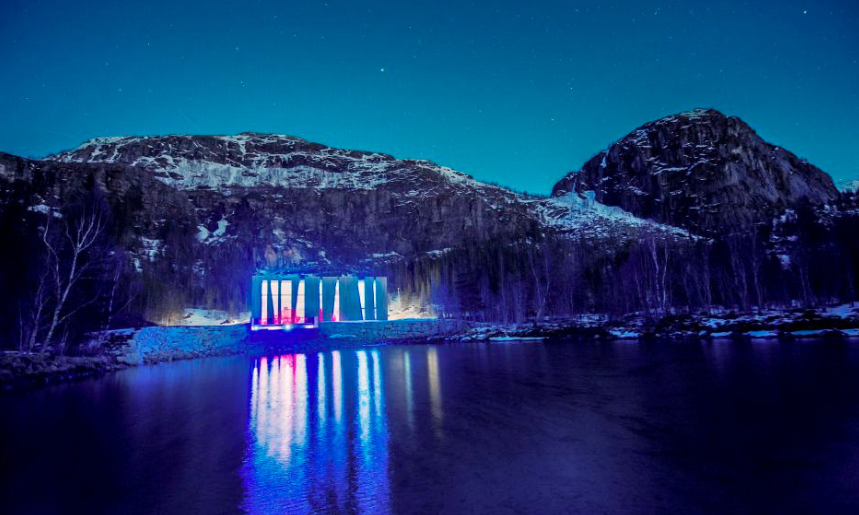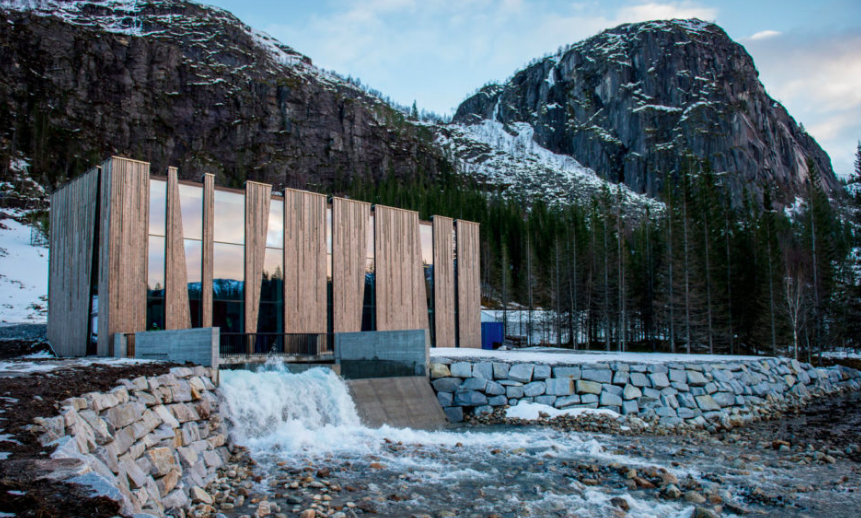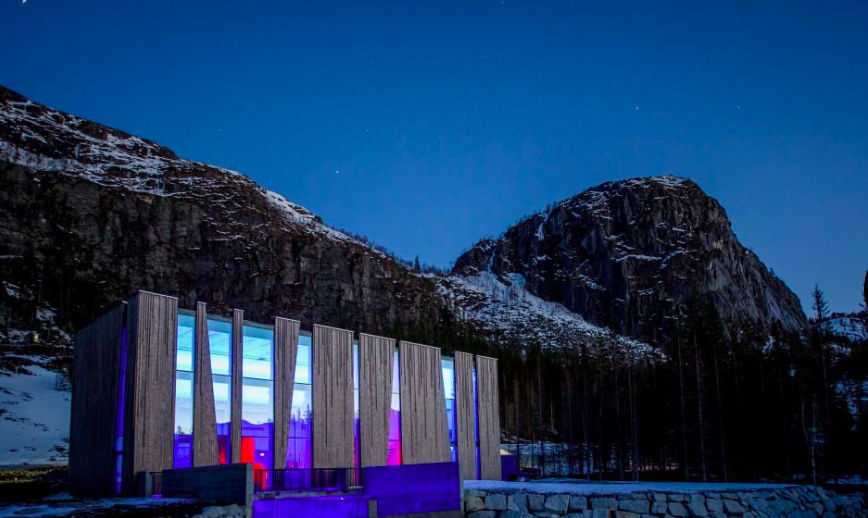Green energy is looking pretty good in Norway.
The Scandinavian country’s power plants have become tourist destinations for those interested in design, nature, and sustainable resources.
Even though Norway is currently powered almost entirely by renewable resources, it continues to build more power plants to further increase its production of clean energy.
But the buildings aren’t solely functional, essential elements to help the country’s energy cause – they’re becoming known for their looks as well, with some serious curb appeal.
Rather than unattractive eyesores, these clean, green energy power stations are becoming tourist destinations with their impressive design and architecture.
The Øvre Forsland power station – a hydroelectric power plant in the forest-filled mountains in the province of Helgeland – is just one example of this. Designed by Stein Hamre and located on a riverbed in a clearing at the edge of a spruce forest, the 30-gigwatt-an-hour plant complements the surrounding natural environment and intentionally reflects the characteristics of the landscape.
“The main inspiration for the design was the verticality and the irregularity of the spruce trees,” said the architects in a statement.
The picturesque mountain setting invites prime ground for hiking – and learning about hydroelectricity while you’re at it.
The plant benefits from a 157-metre drop in the Forsland river and uses two water turbines to convert the flow of water into electricity for the surrounding community, powering 1,600 homes.
It’s not the only design-focused power plant in the country. Another hydroelectric power plant was built with a similar mindset in Bjornstokk, which blends into rocks left over from the last ice age.
As we move further away from fossil fuels (we should all take a page from Costa Rica’s book or turn to Uruguay for some progressive inspiration), hydropower clearly isn’t going anywhere, so we may as well make industrial architecture easy on the eyes.
One could argue that Toronto was a pioneer in elevating the design of basic infrastructure with the R.C. Harris Water Treatment Plant.
With its acclaimed art deco architectural design, the plant was designed to accommodate the public and used to open its doors to tours, becoming a tourist destination itself. While open invitation to the pubic stopped over a decade ago thanks to heightened post-9/11 security, the plant remains one of the city’s most popular Doors Open Toronto attractions.
The plant is currently undergoing reconstructive work to improve its functioning in supplying much of Toronto with clean drinking water, which is expected to be completed by the fall 2018.
In the meantime, you have a new spot to check off your travel to-do list next time you’re in Norway.
[ninja_form id=104]
[ad_bb1]




